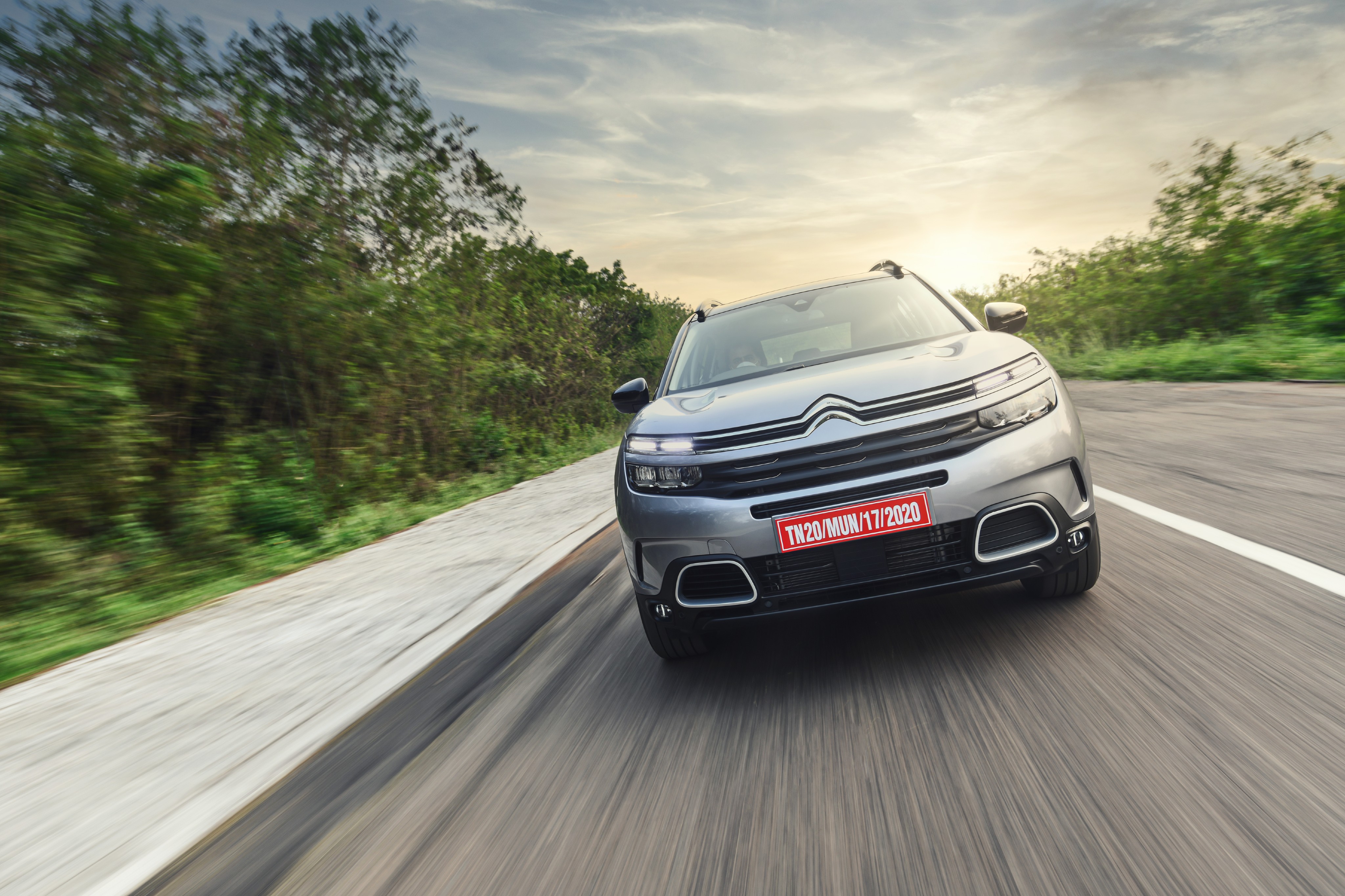Citroen C5 Aircross’ Progressive Hydraulic Cushions suspension | How does it work?
A technical deep dive into Citroën’s Progressive Hydraulic Cushion suspension to find out how different it is from other suspension systems
 The Citroen C5 Aircross gets a technology called ‘Progressive Hydraulic Cushions’, and while those are three complicated words, we’re here to help break it down.
The Citroen C5 Aircross gets a technology called ‘Progressive Hydraulic Cushions’, and while those are three complicated words, we’re here to help break it down.Citroen is all set to enter the Indian market with the C5 Aircross soon and their focus on luxury and ride quality is what makes it especially intriguing. Since 1919, the French car maker has been building cars around the ‘Citroen Advanced Comfort’ programme which focuses on better daily usability and up-to-date technology to enhance the ride quality and comfort. The same goes for the C5 Aircross. Plenty of attention has been given to the seat foam and texture, rear seat comfort and modularity and NVH levels but the suspension set up in the C5 Aircross is rather unique. It gets a technology called ‘Progressive Hydraulic Cushions’, and while those are three complicated words, we’re here to help break it down.
Citroen has always had interesting suspension setups. The french car maker invented the hydropneumatic suspension system back in 1954 which arguably served as one of the most important foundations for development of suspensions ever since. In fact, Citroen licensed the technology to companies like Rolls-Royce and Maserati. Mercedes-Benz's active body control is also based on the principle of the hydropneumatic suspension. The Progressive Hydraulic Cushions suspension was first showcased on the Citroen C5 Aircross Concept back in 2015 and the brand completely replaced the hydropneumatic suspension in 2018. India is set to experience it first hand on the upcoming Citroen C5 Aircross. Let us take a quick look at how it works.
A suspension consists of many components, and two key parts are the springs and dampers. Springs essentially store energy to push the wheel back, while dampers dissipate the energy so that the wheel doesn’t become a yo-yo. Dampers, or shock absorbers, have a piston with a one way valve which moves up and down inside a sealed cylinder and has an oil chamber at its ends. When the damper is compressed and wants to expand again, the one-way valve in the piston allows the oil to flow from one chamber to another but very slowly. In simpler words, it absorbs the shock and partially returns it. This slows down the spring movement and returns the car to a level ride.
The Citroen’s Progressive Hydraulic Cushions suspension aims at eliminating that jolt which is transferred into the body when a shock absorber rebounds. It has two hydraulic stops — one for compression and one for rebound which work in tandem to further slow down the whole action of the shocks. Unlike the mechanical stops that we see on conventional shocks, the hydraulic stops absorb the shock and disperses it as heat thus returning to its neutral position in a far more progressive manner. This, according to Citroen, delivers a "flying carpet" effect. Here's a short clip of Thierry Perron from PSA group chassis engineering explaining how it works:
The Progressive Hydraulic Cushions suspension technology was first developed for the Citroen C3 R5 WRC car. Citroen started off thinking about how the rally car can cushion the impact from the rough rally terrain. Once it was fully developed and proved to work well on the rally stages, they considered using the tech for their road cars too.
 The Citroen C3 R5 in action at the WRC
The Citroen C3 R5 in action at the WRC The older hydropneumatic suspension was good in many ways but it was a slightly more expensive setup and it worked best only on bigger and heavier cars. The Progressive Hydraulic Cushions is less expensive, lighter and easier to build and most importantly, it can be used on smaller cars too. So apart from the cool tech behind it, if you buy the C5 Aircross, you get to tell your mates that your car has rally DNA!
Is Citroen’s Progressive Hydraulic Cushions a leap ahead compared to what we’ve seen so far? We can’t wait to experience it first hand. Watch this space for more updates on the C5 Aircross!


